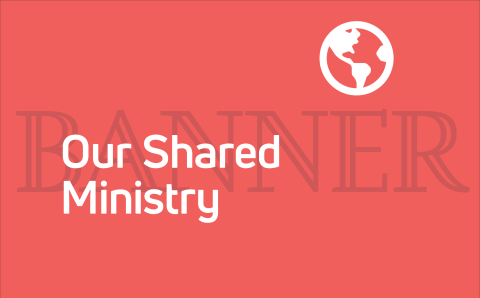Springtime in the farming community of Iron Springs, Alberta, is always an exciting but nerve-racking time of year. Crop farmers eagerly anticipate the season as they prepare the earth for seedlings and then begin the journey of faith, trusting that the seeds will germinate and will receive enough moisture, nutrients, and sunshine to produce a crop of “50- or 100- or 200-fold.”
I recall, some 34 years ago, listening to my father read from Sietze Buning’s Purpaleanie and Other Permutations, his Christmas present from my three siblings. The poet mused tongue-in-cheek about our good solid Reformed roots and nudged us to question whether we were being too conservative and traditional by contentiously sticking to the “true basis” of the Christian faith. As a 12-year-old, I listened to poetry that did not rhyme on purpose—to show that a break from convention could be written by a solid CRCer.
Buning’s farmer mused about planting corn the Reformed way, as compared to the Arminian, Presbyterian, or Roman Catholic way. People of those other traditions could plant corn following the contour of the land. Not we Reformed folk! No way! We planted corn in perfectly straight rows. “No one who puts his hand to the plowshare and looks back is fit for the kingdom of God.”
One reason crops were not planted perfectly straight in the past was the challenge of lining up with a point of reference in the distance. If a hill impeded the farmer’s ability to keep sight of his reference point, he would wander to the left or right of his intended target.
Enter 21st-century technology—GPS and auto-steer in the corn planter’s tractor—which allows every farmer, regardless of religious or denominational background, the ability to drive perfectly straight within a precision of millimeters. The problem is, how can passersby know the difference between my beliefs and my Roman Catholic neighbor’s? They certainly won't be able to tell by how much straighter my crop is planted.
Like our corn rows, perhaps our theological differences are less than they once were. We work together with our Roman Catholic neighbors and six other denominations (Mennonite, Netherlands Reformed, Christian Reformed, United, Catholic, United Reformed, Evangelical Free) on runnung the local food bank, preparing Christmas hampers for the needy in our community, and supporting the Canadian Foodgrains Bank, a communal project that raised over a million dollars in the past 12 years by growing crops for global food aid. I am skeptical that this would have happened 50 years ago.
Did technology help narrow that gap? In part, I think so. We now sing many of the same songs in our respective worship services.We use iPad Bibles (I love my Gateway daily Bible-in-a-year app); we look online for Sunday school crafts, daily devotionals, or information on what it means to serve Christ and love our neighbor. So some credit for tearing down walls goes to the Internet, to Christian radio stations, and to iPad apps, GPS, and smart phones.
The bigger change may come from gathering together in Bible studies, church school, Cadets, GEMs, and Christian schools and universities where opportunities for community and faith to intersect have allowed people from many denominations to jointly learn, read, and hear about Jesus’ walk on earth. Together we learn how he loved, served, and welcomed the tax collector, the prostitute, the thief, the soldier—and even the odd Calvinist farmer who thinks his crops are straighter than his neighbor’s.
So in the spirit of Seitze Buning’s prosey poetry,
let’s embrace our Christian Reformed heritage and our rich doctrines;
let’s teach our youth about the dangers of technology
but also embrace the good in technology and
move one step closer to working with our fellow Christians—
not just to make straighter rows of corn,
but to work together toward feeding the hungry,
protecting the weak, and helping every person on earth know the Lord our God.
Web Questions:
- Kolk quotes Luke 9:62: “No one who puts his hand to the plowshare and looks back is fit for the kingdom of God.” He cites Buning, who mentions that it was used by Reformed farmers to insist on planting corn in straight rows even over contoured fields. Is that what Jesus meant? If not, what did Jesus mean?
- So how might a Reformed farmer treat his operation differently than other farmers? What, if anything, does the Reformed expression of the Christian faith have to with farming?
- Kolk wonders if our theological differences with other Christian denominations have lessened in the past fifty years. Do you think they have? Why or why not? Offer some specific examples.
- Kolk believes technology has brought Christians of many denominations much closer together. How has it done that? Is that a good thing or a bad thing? What are some of the advantages and disadvantages of this?
- Can we stay true to our Reformed roots and still cooperate a lot more with fellow Christians to address the overwhelming challenges in today’s world? Give examples from your own experience.
About the Author
Leighton Kolk owns and operates a grain- and seed-producing farm and a cattle ranch and feedlot with his wife and three children. They attend Iron Springs Christian Reformed Church in Alberta.



